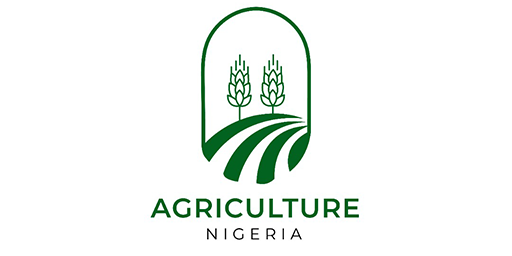Introduction:
Agritech, short for Agricultural Technology, is revolutionizing the way we farm, trade, and eat in Nigeria. As the nation grapples with food insecurity, youth unemployment, and climate change, Agritech is emerging as a powerful solution.
While Nigeria boasts over 70 million hectares of arable land, much of it remains underutilized. Traditional farming methods, limited access to finance, poor market access, and inefficient supply chains have long crippled the sector. But all of that is beginning to change—with Agritech leading the charge.
From mobile apps that connect farmers to buyers, to drone technology, to AI-powered weather forecasting, Agritech is bridging the gap between rural farmers and urban markets, between low productivity and profitability, between farming as a burden and farming as a business.
1. Bridging the Information Gap
Many smallholder farmers in Nigeria still rely on outdated methods passed down through generations. Agritech helps democratize information.
Platforms like:
…provide farmers with real-time weather updates, market prices, planting calendars, pest and disease diagnosis, and farming best practices via mobile phones—even without internet!
Stat: 80% of Nigerian farmers are smallholders. Access to information via Agritech could increase yields by up to 40%, according to the International Food Policy Research Institute (IFPRI).
2. Enhancing Access to Finance
Agritech platforms have made it easier for farmers to access funding through crowdfunding, mobile lending, and digital cooperatives.
Examples:
-
Farmcrowdy: Connects investors to farmers
-
ThriveAgric: Offers financing and extension services through tech
-
Tingo Mobile: A digital financial service platform for rural farmers
By tracking farmers’ data, yield history, and market behavior, Agritech firms help de-risk agriculture and make it attractive for banks and investors.
3. Precision Farming and Smart Agriculture
Agritech isn’t just about apps—it’s about smart farming:
-
Drone Technology for crop spraying and field surveillance
-
Soil sensors to test fertility and water levels
-
GPS mapping for land use planning
-
IoT devices to monitor greenhouse conditions remotely
Stat: Precision agriculture can increase crop productivity by 20–25% while reducing input costs by 15–30% (Source: McKinsey Africa Report).
In Nigeria, this is especially vital in the face of erratic rainfall and desertification.
4. Reducing Post-Harvest Losses
A huge chunk of what we grow never makes it to the table.
Agritech is helping to solve this by:
-
Digitizing storage and logistics (e.g. Releaf, a tech-driven processing startup)
-
Offering cold storage on demand (e.g. ColdHubs, which runs solar-powered cold rooms)
-
Connecting producers to processors and retailers through digital platforms
These innovations ensure less food waste and more farmer income.
5. Market Access and Digital Agriculture Marketplaces
With platforms like:
-
TradeDepot
-
e-Kilimanjaro and others,
farmers can now sell directly to consumers, retailers, and wholesalers without the usual middlemen. This means better prices, transparency, and more trust.
Fact: In Nigeria, middlemen sometimes take up to 60% of profit margins from the farm gate to the market. Agritech is disrupting this imbalance.
6. Empowering Youth and Creating Jobs
Young people are often uninterested in traditional farming. But Agritech speaks their language – technology.
Startups, data science roles, drone pilots, agri-logistics managers, farm software developers… all these are part of the new agriculture ecosystem.
Agritech:
-
Makes farming appealing to the tech-savvy youth
-
Creates jobs across the value chain
-
Opens doors for remote work and innovation in rural areas
Stat: Agriculture employs over 35% of Nigeria’s labor force. The integration of technology could push that to over 50% with better wages and job satisfaction.
7. Supporting Food Security and Climate Resilience
With Agritech:
-
Farmers can predict rainfall and avoid crop failure.
-
Smart irrigation systems optimize water usage.
-
AI can suggest the best crops for a specific location based on soil and climate data.
In a country battling climate change, rising food prices, and a growing population, this is no longer optional—it’s a necessity.
Conclusion:
Agritech isn’t a trend—it’s a necessity for survival and progress in Nigeria’s agricultural sector.
With the right investment, collaboration, and policy support, Nigeria can become a hub of digital agriculture and feed not only itself but the rest of Africa.
If you’re a farmer, youth, policymaker, investor, or just curious about agriculture—now is the time to embrace Agritech.
The future of Nigerian agriculture is digital, data-driven, and dynamic.
OTHER RELATED ARTICLES
- An Introduction to Tilapia Fish Farming
- Yam Production
- Cassava Production – Irresistible Farming guide, Economic potential and 5 trends.
- Cassava Starch Production | Market Demand |10 Essential Processing lines |
- Learn How To Transform Cassava Peels into Animal Feed
- Cassava processing video
- Cashew Production…Fascinating Market Trends
- Land Preparation Activities
- Feeding in aquaculture: 4 Simple but Important things you need to know
- An Introduction to Livestock Production
- How to make Your Own Animal Feeds (For Cattles and Sheep)
- Goat Production
- Turkey Production
- Rabbit Production
- Grasscutter Production
- Shrimp Farming
